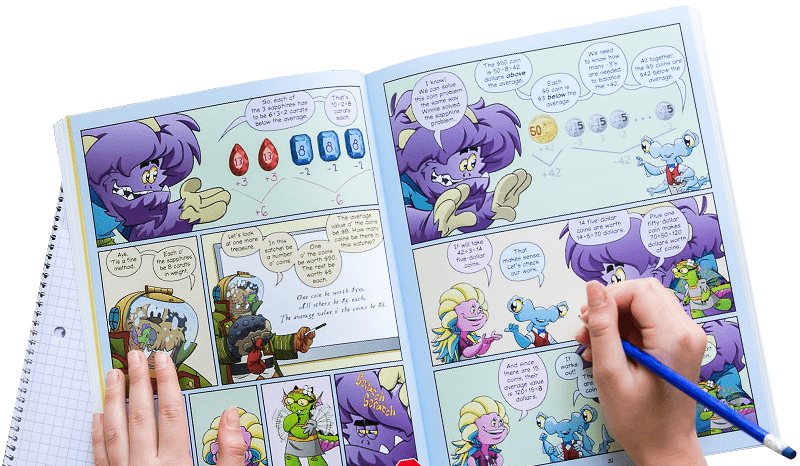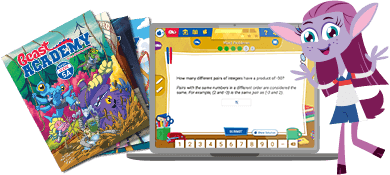Odd Knights
Practice strategic thinking by selecting knights from the round table to join you on your quest.
Instructions
Place an odd number of tokens in a circle. (We used cups.) Nine is a good number to start with. These are the Odd Knights of the Round Table! Then, take turns picking knights to join you on your crusade. Take either 1 knight, or 2 knights who are seated right next to each other. Continue until all knights have been chosen. The player with an odd number of knights at the end wins!
Take turns going first, and try to figure out which player has an advantage.
Odd Knights is a variation of the classic math game, Nim (and so are other BA Playground games, including Anywhere Nim and Bumper Cars).
Don't forget: it's Beast Academy Playground, not Beast Academy Study Hall. Change the rules, be silly, make mistakes, and try again. The Variations and Learning Notes are here for you if you want to dive deeper, but not all of them apply to learners of every age. The most important thing is to have fun.
What do you think of this activity?
We're always looking to improve. Submit your feedback to us below.
- tokens
- strategic thinking
- even/odd numbers
- counting
- MP1
- MP7
- MP8
- K.CC.B.5
- 2.OA.C.3

Ready to level up?
Keep problem solving with Beast Academy’s full math curriculum for students ages 6–13. Check out our captivating comic book series and immersive online platform.
LEARN MOREBring problem-solving to your classroom
Keep your entire class engaged with a full book and online math curriculum, for students ages 6–13. 98% of teachers say they’re satisfied with Beast Academy.
LEARN MORE



Ready to level up?
Keep problem solving with Beast Academy’s full math curriculum for students ages 6–13. Check out our captivating comic book series and immersive online platform.
LEARN MOREBring problem-solving to your classroom
Keep your entire class engaged with a full book and online math curriculum, for students ages 6–13. 98% of teachers say they’re satisfied with Beast Academy.
LEARN MORE
Sign up to be notified when new videos are released.















































